High-yielding mid-season broccoli cabbage hybrid Fiesta f1
Broccoli cabbage has firmly established itself in the agricultural market and has attracted the interest of gardeners from different regions of Russia. One of the best mid-season varieties with a wide geographical distribution is the Dutch hybrid Fiesta F1. Productivity is maintained even in cold climates. How does Fiesta differ from other varieties?
The overview characteristics will answer all questions about the qualities of the hybrid and the features of agricultural cultivation technology.
Description of the broccoli hybrid Fiesta F1
Broccoli is an annual cabbage plant from the cruciferous family. The birthplace of the culture is the Eastern Mediterranean. The first mention of broccoli dates back to the beginning of our era.
In the 18th century, the vegetable had already spread widely throughout Europe and became one of the most popular in America. In Russia, this cabbage is planted sparingly—interest in it has just begun to gain momentum. This is due to the climate and taste of the vegetable.
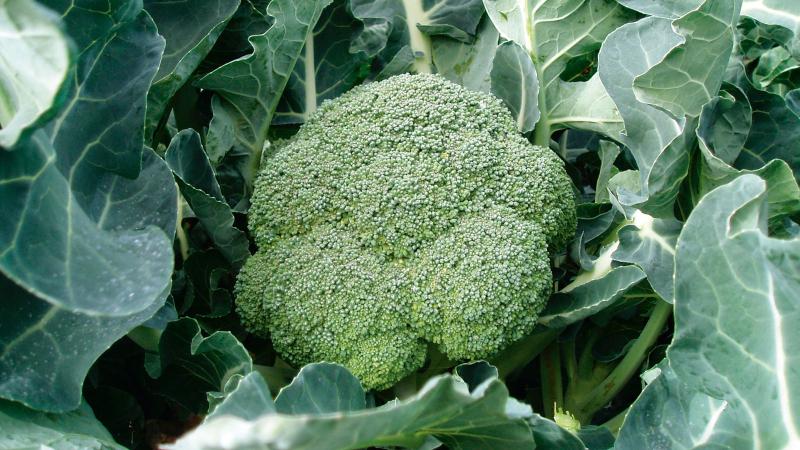
Breeding history
There are about 200 varieties and broccoli hybrids. Due to their high yield, hybrids are valued higher, even though the seeds of these plants are not suitable for further use.
The Fiesta F1 hybrid was obtained by Dutch breeders of the company Bejo Zaden B.V. Through varietal recombinations, the vegetable acquired the best qualities of its parent forms.
In 1999, the hybrid variety was included in the State Register and is not limited to the cultivation area.
Chemical composition
Kale is different plenty of proteins and carbohydrates.
Important! 100 g of vegetable contains 99% of the daily value of ascorbic acid.
Broccoli contains:
- nonessential and essential amino acids;
- saturated, polyunsaturated and monounsaturated fatty acids;
- vitamins – B1, B2, B5, B6, B9, K, E, C, A, PP, NE, RE, TE, alpha and beta-carotene, betaine;
- macroelements - calcium, potassium, magnesium, silicon, sodium, phosphorus, sulfur;
- trace elements - manganese, chromium, zinc, selenium, copper, nickel, iron, boron, iodine.
100 g of vegetable contains:
- proteins – 2.8 g;
- fat – 0.4 g;
- carbohydrates – 6.6 g;
- water – 89.3 g;
- fiber – 2.6 g;
- calories – 34 kcal.
Features of application
Asparagus cabbage refers to dietary products, used in cooking and suitable for any culinary processing. It is included in the list of hypoallergenic products.
Ripening time and yield
Fiesta is a mid-season vegetable for summer-autumn harvesting. Growing time is from May to September. Growing season – 80 days from planting seedlings.
The hybrid is distinguished by the simultaneous ripening of inflorescences and a consistently high yield - from 2.8 to 3.5 kg/m² or about 200 c/ha.
Resistance to diseases, pests and cold
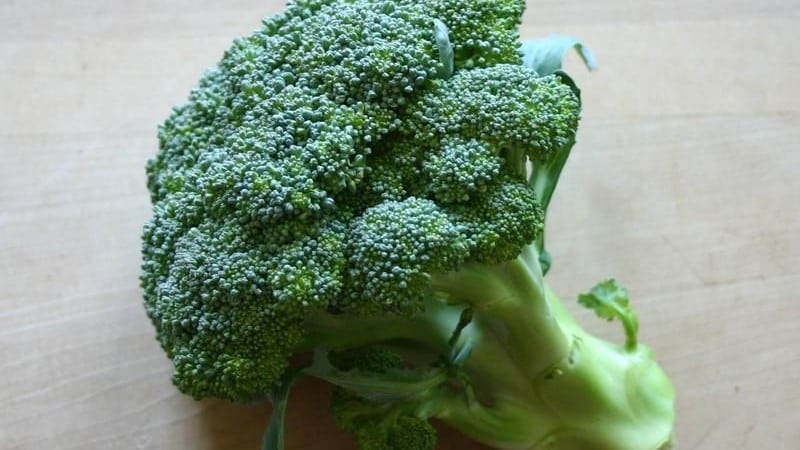
The plant is immune to Fusarium wilt and resistant to major crop diseases.
The variety is adapted to sudden temperature changes. The seedlings can withstand short-term frosts down to -8°C without damage to the head. A long period of cooling will delay but not stop development.
Characteristics, description of appearance, taste
The plant is externally strong and compact. The rosette is formed by erect, petiolate leaves and a thick stem without side shoots. The leaves are entire, bluish-green in color with a thin waxy coating.The leaf blades are elongated, slightly bubbly and wavy curved.
The flowering head is dense, rounded-flat, medium-sized and medium-lumpy. Dark greens have a blue tint. The average weight of the head is about 800 g, the maximum is up to 1.5 kg. Cabbage has a delicate, neutral taste with a pleasant nutty aftertaste.
Reference! Broccoli leaves are also edible and taste similar to green beans.
For which regions is it best suited and what are the climate requirements?
Due to its unpretentiousness, resistance to short-term spring frosts and sudden changes in weather, the geography of growing the hybrid is very extensive. It is suitable for southern latitudes, the middle zone, the Moscow region, the Urals and Siberia.
Optimal conditions for growth are from +18 to +25°C. At temperatures above +25°C the inflorescences become loose.
The main advantages and disadvantages of a hybrid
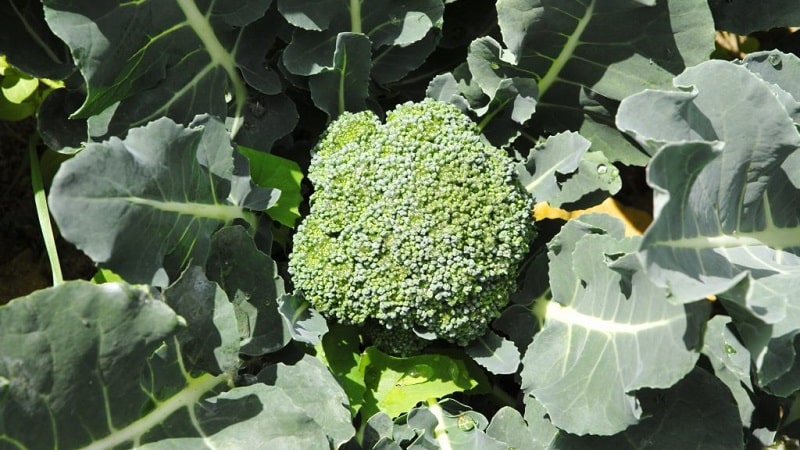
Strengths include:
- large fruit;
- resistance to spring frosts;
- high productivity;
- immunity to fusarium;
- resistance to major crop diseases;
- marketable condition;
- good keeping quality and transportability.
The disadvantages include:
- absence of side shoots;
- sensitivity to increased temperature;
- short terms for harvesting.
What is the difference from other varieties and hybrids
Distinctive features of Fiesta F1 broccoli:
- cold resistance;
- plasticity of cultivation geography;
- nutty taste;
- possibility of planting twice per season;
- maintaining productivity during sudden weather changes.
Features of planting and growing
In cold and damp climates, the crop shows the highest productivity.
Preparing for landing
In the fall, they prepare the soil: they dig it up and fertilize it with rotted manure.In spring, the soil is loosened and mineral fertilizers, wood ash and dolomite flour are applied.
Seeds for seedlings of the first term are sown from mid-March to early April, for the second term - from the first ten days of April to the end of May. Planting depth is no higher than 0.5 cm. Seedlings are prepared in cassettes with 5x5 cm cells.
Temperature before germination – +20°C, with the emergence sprouts – +10-15°C, as it grows it increases again to +20°C. As soon as 2 true leaves appear, the seedlings dive.
How to plant without seedlings
In southern and middle latitudes, broccoli is sown in open ground. The optimal sowing time is the end of April. Planting depth is 2 cm. Sow according to the 60x30 cm pattern. Before germination, the beds are covered with a dark film.
Attention! After cruciferous vegetables, broccoli is planted after 4 years.
Soil requirements
Fertile, medium-loamy soil with a slightly acidic or neutral reaction is suitable for asparagus cabbage. The soil should be light, with good aeration. Venues are chosen that are not shaded.
Best predecessors:
Dates, scheme and rules of planting
Seedlings are planted in open ground at the age of 30-35 days. Plants of the first sowing are transplanted in May, the second - in mid-June. Planting pattern – 60x30 cm. The holes are deepened to 10-15 cm.
Add a centimeter layer of a mixture of humus, wood ash and crushed chalk. Onion peels will repel pests. The holes are well watered and broccoli is planted. Work is carried out in the afternoon.
Features of cultivation
Lack of moisture has a bad effect on the taste and appearance of the vegetable. To grow broccoli, it is better to choose the drip irrigation method.
Mulching the stem zone will help conserve moisture.During dry periods, fertilizers are applied with a solution.
Nuances of care
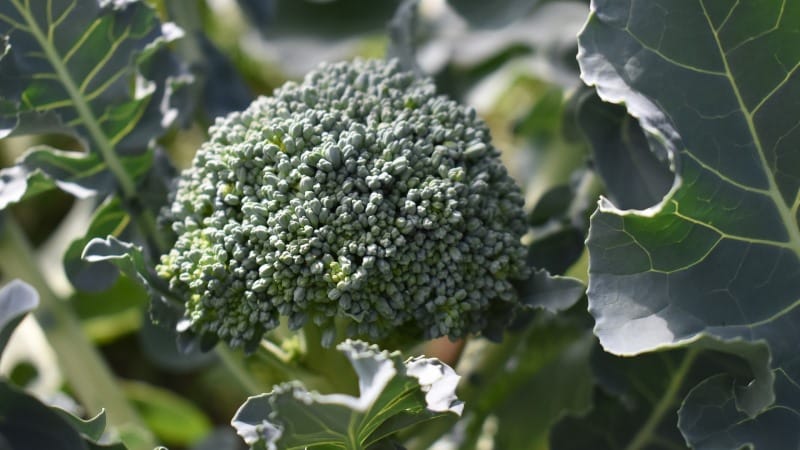
A week after planting the seedlings, the row spacing is loosened to a depth of 4-6 cm. Subsequently, the beds are deepened to 10-12 cm and loosened after rains and waterings. Weeds are weeded by hand. At an optimal temperature of +18 to +25°C, water every 2-3 days. Above optimal – daily, 2 times a day.
They are fed with organic matter, nitrogen and potassium fertilizers. They are applied for the first time 15 days after planting seedlings or 25 days after seed germination. The second time - during the formation of the heads and the third time - 2 weeks before harvest.
Disease and pest control
The Fiesta hybrid is resistant to major diseases of the cabbage family. To prevent fungal infections, plants are sprayed with fungicides and the optimal planting scheme is followed.
The main fight is against garden pests:
- for aphids, use the Oxychoma solution and frequent spraying with water and herbs;
- The drug “Silk” fights slugs and snails; mulching the beds with pine needles or dusting with wood ash helps;
- A solution of potassium permanganate is effective against the May beetle and flea beetles;
- The cabbage cutworm is destroyed by “Lepidotsid”, and the caterpillars are destroyed by “Belofos” and “Fosbetsid”.
Harvest and storage
Vegetables of the first sowing are harvested in August, the second - in September.
How and when to collect
As soon as the green heads of the hybrid are fully formed, they are cut off along with the stem. After 2-3 days they will become loose and bloom - the broccoli will lose its presentation and the taste will deteriorate. For harvesting, choose the morning or evening time - this way the fruits will retain maximum juiciness.
Storage Features
Broccoli has good shelf life, but the shelf life of the crop is short and depends on temperature and humidity:
- at room conditions – 3-5 days;
- in the refrigerator (+5...+7°C) – 3 weeks;
- in the cellar (-1…0°C) – 2 months;
- shock freezing (-18°C) – 8 months.
The best storage option is frozen. The heads are divided into inflorescences with a stalk no larger than 1-2 cm. The vegetables are washed, dried, frozen on trays in one layer and packaged in bags.
For storage in the basement, boxes with perforated walls are suitable. The bottom of the boxes is covered with a damp cloth. The heads are placed with their legs on the fabric so that they do not touch each other. The top of the boxes is covered with film. The optimal storage temperature is -1...0°C with an air humidity of 80-90%.
What difficulties may there be when growing
There will be no special problems with the Fiesta F1 hybrid. The main task is to organize proper watering, prevent pests and manage to harvest on time.
Reviews from gardeners about broccoli Fiesta F1
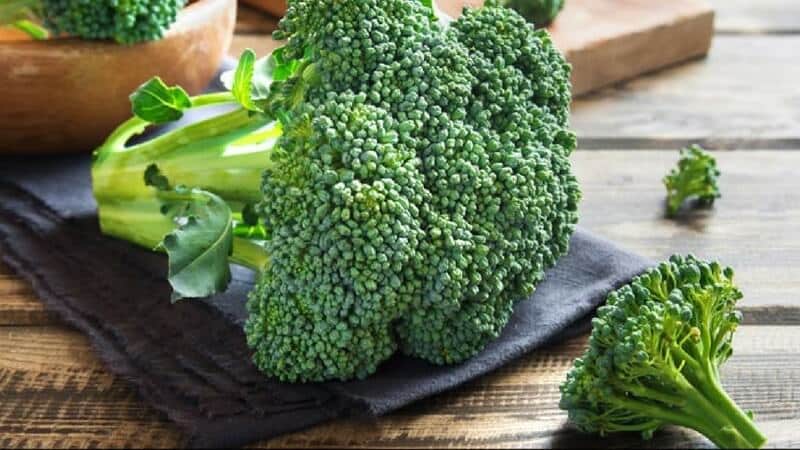
Summer residents with experience in growing broccoli consider Fiesta a reliable hybrid that has been proven over the years. High yield and quality of taste are noted. Many professionals plant only Fiesta and recommend it to beginners.
Julia, Kostroma: “In our country, broccoli is not cheap, and it is not always available in stores. I decided to grow it in the country, on my own. I was advised to use the Dutch hybrid Fiesta. The seedlings turned out to be elongated and fragile, but the cabbage still grew, and I am satisfied with the harvest. I was pleasantly surprised by the slight nutty flavor. This is the best broccoli I've ever tasted."
Olga Vasilievna, Podolsk: “I’ve been planting the Fiesta hybrid for several years now. Seed germination is excellent and yield is good, even if the weather is bad. Cabbage sometimes leans to one side, so I recommend hilling it up.”
Conclusion
Broccoli Fiesta is suitable for growing in different regions.The plant will maintain productivity at temperatures from -5 to +25°C. The optimal range is +18…+25°C. The hybrid is disease resistant and unpretentious. Timely watering guarantees high yields. The heads are collected no later than 2-3 days after ripening.